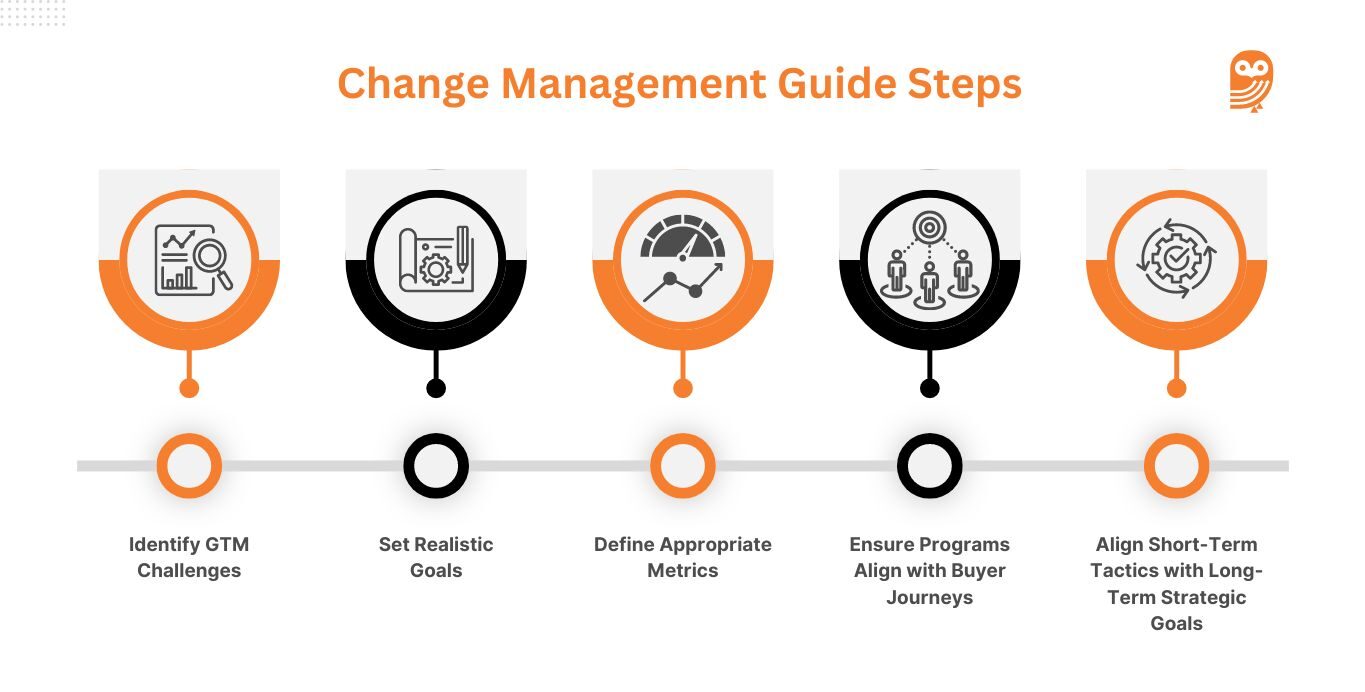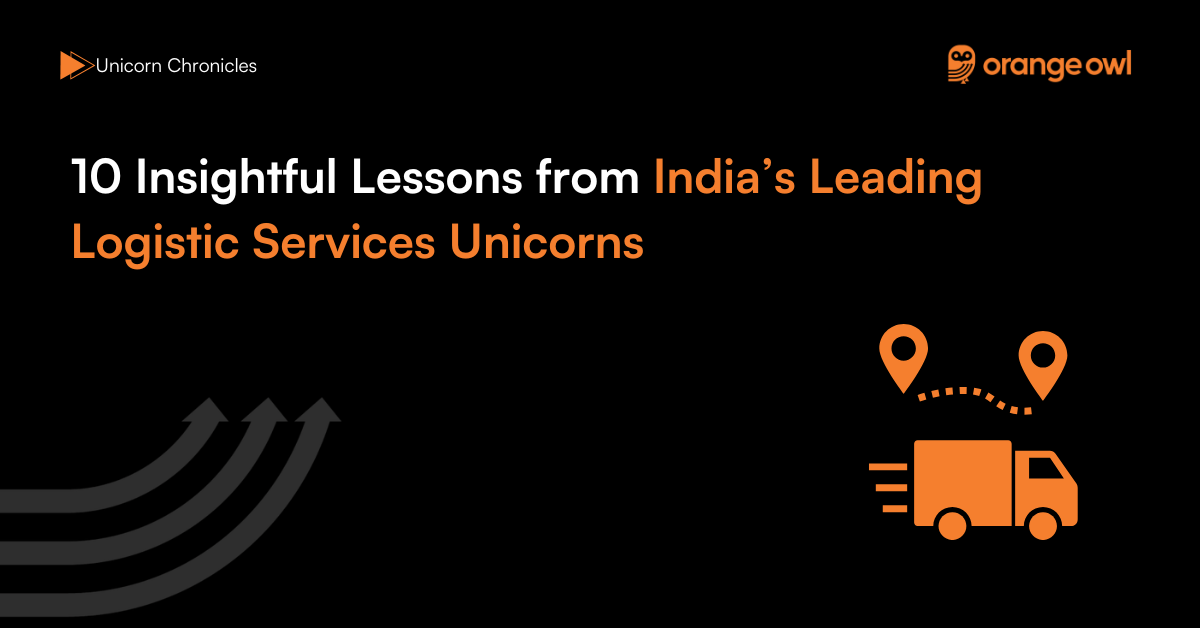Transforming Marketing from Cost Center to Strategic Asset: A Comprehensive Change Management Guide
Orange Owl
May 27, 2024

This article ( Transforming Marketing from Cost Center to Strategic Asset: A Comprehensive Change Management Guide ) was first published on NASSCOM.
Table of Contents
If your organization views marketing solely as a lead generation function and a cost center, it’s time to initiate a strategic overhaul. Effective change management can reposition marketing as a critical driver of long-term business success. Here’s an in-depth guide to revamping your marketing strategy to support broader business objectives and ensure sustainable growth.
Change Management Guide

1. Identify GTM Challenges
Forming the Foundation: Start by assembling a cross-functional change management team that includes members from marketing, sales, and other crucial stakeholders. This team will be pivotal in driving the change process.
Deep Dive Analysis: Conduct a thorough review of your sales pipeline, analyze lost deals, and scrutinize failed marketing programs to clearly identify specific go-to-market (GTM) challenges. Common issues might include:
- Vendor Awareness Deficit: Sales teams struggle to garner responses due to insufficient brand recognition.
- Unclear Product Value Proposition: Prospects do not fully grasp the unique benefits your product offers, hindering conversion rates.
Consensus on Challenges: It is essential that all stakeholders acknowledge these challenges and commit to addressing them collectively, which is crucial for successful change implementation.
2. Set Realistic Goals
Tempering Expectations: One of the primary reasons marketing initiatives fail is impatience and unrealistic expectations about the results they can deliver. It’s important to understand that effective marketing results build over time.
Strategic Planning:
- Analyze Key Metrics: Look at sales pipeline velocity and revenue metrics to set a baseline for improvement.
- Reflect on Successes: Consider what has worked in the past and why, using these insights to guide future strategies.
- Establish Achievable Targets: Identify straightforward, achievable goals that can serve as early wins to build momentum.
3. Define Appropriate Metrics
Broadening Measurement Criteria: Moving beyond leads as the sole metric for success is crucial. Not every marketing effort will directly lead to a click or conversion, and that’s okay.
Alternative Metrics to Consider:
- Message-Buyer Fit: How well does your messaging align with the needs and desires of your target audience?
- Content Impact & Relevance: Does your content engage your target audience and prompt them to think differently about their challenges?
- Brand Awareness: How recognizable is your brand within your target markets and key accounts?
- Smoothness of Buying Process: Identify and address any friction points within the customer buying journey.
4. Ensure Programs Align with Buyer Journeys
Beyond Jargon: It’s easy to label any initiative as “ABM” or “Demand Gen,” but harder to execute them effectively.
Ensure your programs genuinely match the stages of the buyer journey:
- Awareness: Create initial awareness of your brand and offerings.
- Engagement: Connect with potential buyers, particularly key decision-makers within target accounts.
- Thought Leadership: Provide deep, insightful content that positions your company as a leader in its field.
- Nurturing: Use targeted channels to nurture potential leads, focusing on education and adding value.
- Personalization: Tailor interactions based on detailed account research to resonate more deeply with potential customers.
5. Align Short-Term Tactics with Long-Term Strategic Goals
Strategic Harmony: Aligning daily tactics with overarching business strategies is vital for sustained growth. This alignment ensures that marketing efforts contribute to long-term objectives rather than just short-term gains.
Comprehensive Strategy Development:
- Full-Funnel Strategy: Develop strategies that cover every stage of the funnel—from creating awareness at the top to activating target accounts at the bottom.
- Resource Allocation: Dedicate enough resources, both time and budget, to allow strategies to fully mature and deliver results.
Persistence Pays Off
Remember, there are no shortcuts in building a successful B2B organization. Marketing requires a commitment to continuous improvement and adaptation based on results and changing market conditions.
By rethinking the role of marketing and implementing these strategic changes, you can transform your marketing department from a perceived cost center to a vital asset that drives business growth and competitive advantage.
FAQ’s
Collaboration across departments is crucial for marketing success because each department brings unique insights and expertise that can enhance the overall strategy. For example, sales can provide direct feedback from customers, product teams can ensure accurate and compelling product information and customer service can highlight recurring issues or customer needs. By working together, departments can create a cohesive and effective marketing plan that addresses all aspects of the customer journey.
Identifying GTM challenges involves a thorough review of the sales pipeline and an analysis of lost deals and failed marketing programs. Key steps include forming a cross-functional change management team to drive the process, conducting deep dive analyses to pinpoint specific issues like brand recognition deficits or unclear value propositions, and ensuring consensus among stakeholders on the identified challenges. This collaborative approach helps in accurately diagnosing problems and developing strategies to address them.
Realistic goals should be based on thorough analysis and tempered expectations. Key metrics to consider include sales pipeline velocity, revenue metrics, and past successes. Establishing achievable targets, such as improving brand awareness, aligning messaging with buyer needs, and enhancing the smoothness of the buying process, can serve as early wins. These early successes build momentum and help in setting the stage for more ambitious long-term objectives.
Beyond lead generation, marketing success should be measured using metrics that reflect broader strategic goals. These can include:
- Message-Buyer Fit: Assessing how well marketing messages align with the target audience’s needs.
- Content Impact & Relevance: Evaluating whether content engages the audience and changes their perspective.
- Brand Awareness: Measuring brand recognition within target markets.
- Smoothness of Buying Process: Identifying and reducing friction points in the customer journey.
These metrics provide a more comprehensive view of marketing effectiveness.
Aligning short-term tactics with long-term strategic goals involves:
- Developing a Full-Funnel Strategy: Create strategies that cover every stage of the sales funnel, from awareness to activation.
- Resource Allocation: Ensure sufficient resources are allocated to allow strategies to mature and deliver results.
- Strategic Harmony: Daily marketing activities should contribute to overarching business objectives, ensuring that efforts lead to sustained growth rather than just short-term wins.
This strategic alignment is essential for building a successful and resilient marketing function.
Initiating a strategic overhaul involves several key steps:
- Identify GTM Challenges: Form a cross-functional team, conduct deep dive analyses, and achieve consensus on challenges.
- Set Realistic Goals: Temper expectations, analyze key metrics, reflect on past successes, and establish achievable targets.
- Define Appropriate Metrics: Move beyond leads to include metrics like message-buyer fit, content impact, brand awareness, and buying process smoothness.
- Align Programs with Buyer Journeys: Ensure marketing initiatives genuinely match the buyer’s journey stages.
- Align Tactics with Goals: Develop a full-funnel strategy, allocate resources effectively, and ensure daily tactics support long-term objectives.
Effective change management is essential to repositioning marketing as a critical driver of long-term business success.


